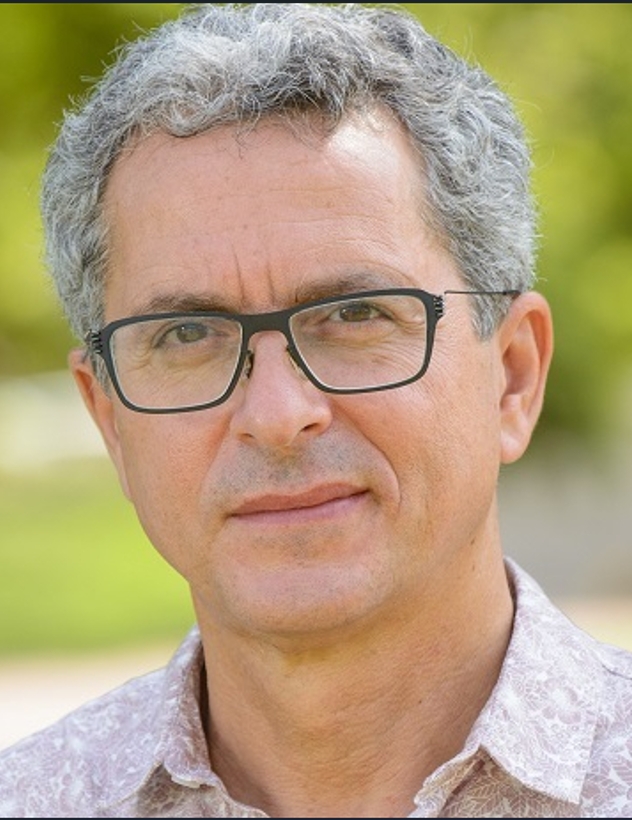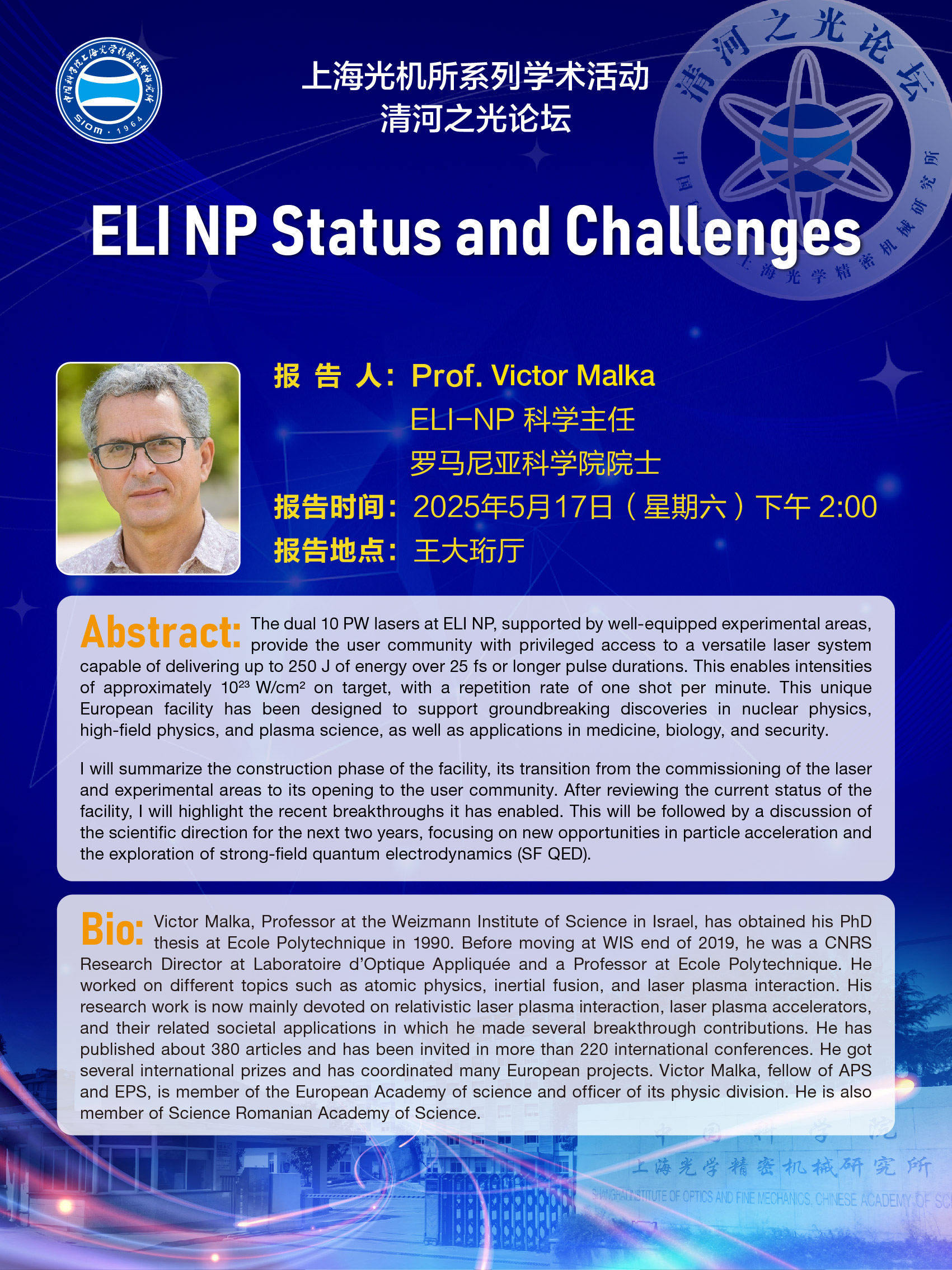 |
报告人: |
Prof. Victor Malka |
| 报告题目: |
ELI NP status and challenges |
| 报告时间: |
2025年5月17日(星期六)下午14:00 |
| 报告地点: |
王大珩厅 |
|
|
| 报告人简介 |
|
Victor Malka, Professor at the Weizmann Institute of Science in Israel, has obtained his PhD thesis at Ecole Polytechnique in 1990. Before moving at WIS end of 2019, he was a CNRS Research Director at Laboratoire d’Optique Appliquée and a Professor at Ecole Polytechnique. He worked on different topics such as atomic physics, inertial fusion, and laser plasma interaction. His research work is now mainly devoted on relativistic laser plasma interaction, laser plasma accelerators, and their related societal applications in which he made several breakthrough contributions. He has published about 380 articles and has been invited in more than 220 international conferences. He got several international prizes and has coordinated many European projects. Victor Malka, fellow of APS and EPS, is member of the European Academy of science and officer of its physic division. He is also member of Science Romanian Academy of Science. |
| 报告简介 |
|
The dual 10 PW lasers at ELI NP, supported by well-equipped experimental areas, provide the user community with privileged access to a versatile laser system capable of delivering up to 250 J of energy over 25 fs or longer pulse durations. This enables intensities of approximately 1023 W/cm² on target, with a repetition rate of one shot per minute. This unique European facility has been designed to support groundbreaking discoveries in nuclear physics, high-field physics, and plasma science, as well as applications in medicine, biology, and security.
I will summarize the construction phase of the facility, its transition from the commissioning of the laser and experimental areas to its opening to the user community. After reviewing the current status of the facility, I will highlight the recent breakthroughs it has enabled. This will be followed by a discussion of the scientific direction for the next two years, focusing on new opportunities in particle acceleration and the exploration of strong-field quantum electrodynamics (SF QED). |
| 本期论坛海报 |
|

| |












